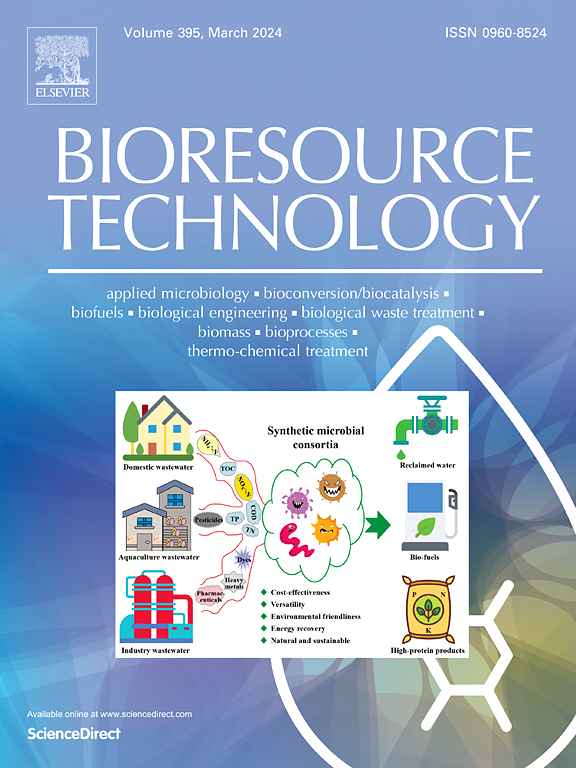高通量群落和宏基因组揭示了好氧污泥形态演化过程中的系统性能变化和功能转变机制
IF 9
1区 环境科学与生态学
Q1 AGRICULTURAL ENGINEERING
引用次数: 0
摘要
本研究采用高通量测序和宏基因组学技术研究了好氧污泥从活性污泥(AS)到好氧颗粒污泥(AGS)再到藻-菌颗粒污泥(ABGS)制粒过程中的微生物序列和功能基因动态。研究发现,随着污泥形态的演变,污泥体系的沉降度和污染物去除效率均有所提高。细胞外聚合物质(EPS)分析显示,AGS期蛋白质含量从2.1 mg/gSS增加到17.4 mg/gSS, ABGS期多糖含量从3.3 mg/gSS增加到5.9 mg/gSS。微生物群落分析表明,污泥演化降低了物种丰富度,但丰富了脱氮除磷功能菌,同时增加了群落结构的复杂性和物种间的密切相互作用。参与三羧酸循环、氮磷和EPS代谢的关键基因也上调。本研究揭示了污泥形态演化过程中功能转变的连续性机制和阶段依赖性。本文章由计算机程序翻译,如有差异,请以英文原文为准。

High-throughput community and metagenomic elucidate systematic performance variation and functional transition mechanisms during morphological evolution of aerobic sludge
In this study, high-throughput sequencing and metagenomics were used to investigate the microbial succession and functional gene dynamics during aerobic sludge granulation from activated sludge (AS) to aerobic granular sludge (AGS) to algal-bacterial granular sludge (ABGS). It was found that the settleability and pollutant removal efficiency of the sludge system increased with the sludge morphology evolution. Extracellular polymeric substances (EPS) analysis showed a rise in protein from 2.1 to 17.4 mg/gSS during stage of AGS and polysaccharides from 3.3 to 5.9 mg/gSS during stage of ABGS. Microbial community analysis revealed that the sludge evolution reduced species richness but enriched functional bacteria for nitrogen/phosphorus removal, while increasing the complexity of community structure and close interactions between species. Key genes involved in the tricarboxylic acid cycle, nitrogen/phosphorus and EPS metabolism were also upregulated. This study revealed the continuity mechanism and stage dependence of the functional transition during sludge morphology evolution.
求助全文
通过发布文献求助,成功后即可免费获取论文全文。
去求助
来源期刊

Bioresource Technology
工程技术-能源与燃料
CiteScore
20.80
自引率
19.30%
发文量
2013
审稿时长
12 days
期刊介绍:
Bioresource Technology publishes original articles, review articles, case studies, and short communications covering the fundamentals, applications, and management of bioresource technology. The journal seeks to advance and disseminate knowledge across various areas related to biomass, biological waste treatment, bioenergy, biotransformations, bioresource systems analysis, and associated conversion or production technologies.
Topics include:
• Biofuels: liquid and gaseous biofuels production, modeling and economics
• Bioprocesses and bioproducts: biocatalysis and fermentations
• Biomass and feedstocks utilization: bioconversion of agro-industrial residues
• Environmental protection: biological waste treatment
• Thermochemical conversion of biomass: combustion, pyrolysis, gasification, catalysis.
 求助内容:
求助内容: 应助结果提醒方式:
应助结果提醒方式:


